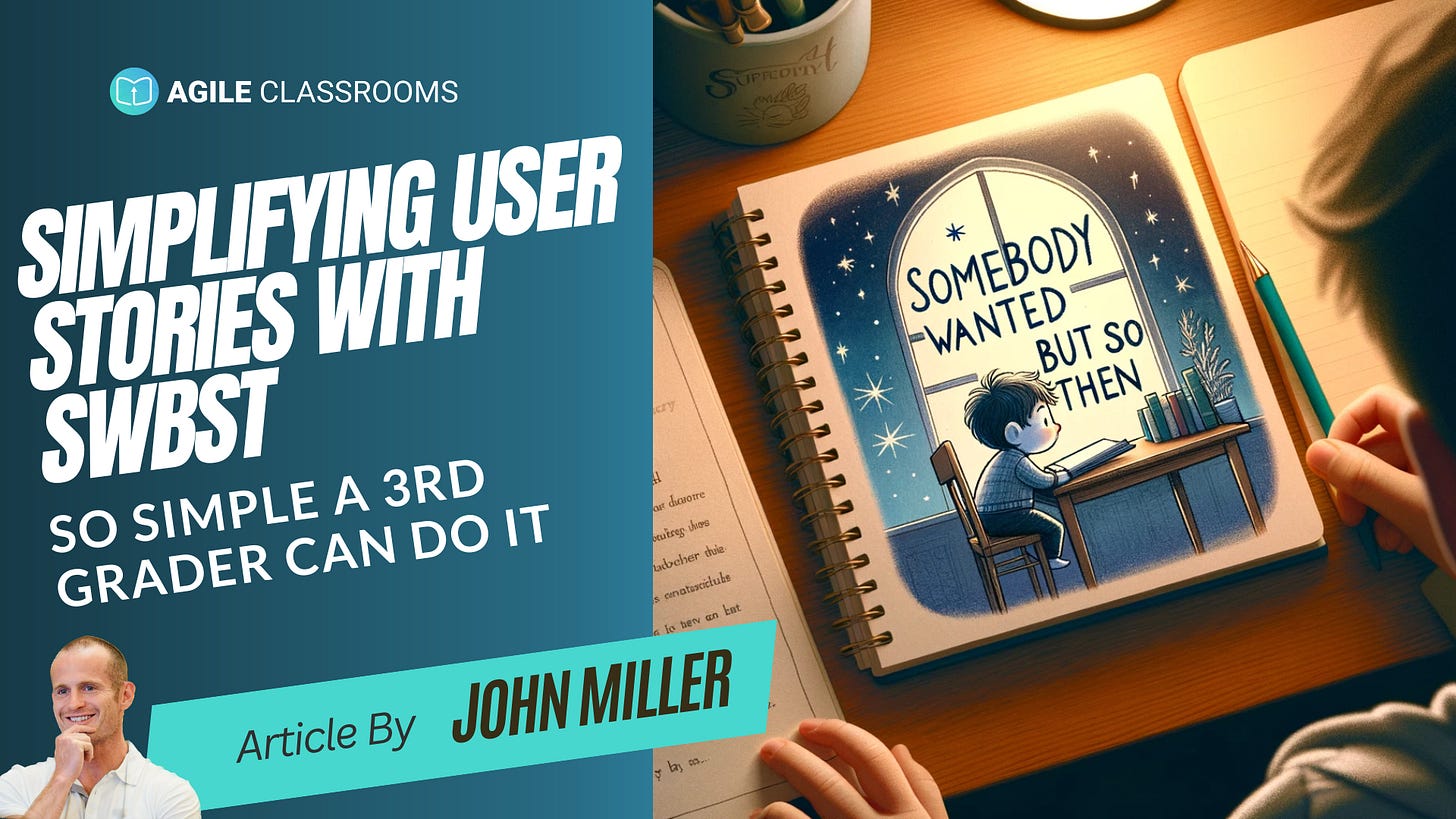Simplifying User Stories with SWBST
So Simple a 3rd Grader Can Do It
One evening, while helping my eight-year-old with her homework, we worked on an interesting assignment: summarize a story using the "Somebody Wanted But So Then" (SWBST) method. She wrote down, "Somebody wanted to build a treehouse. But they had no tools. So, they gathered friends to help. Then, they built the best treehouse ever." Watching her break down the story into these clear, concise parts sparked an idea. If this method can clarify complex stories for third graders, why not use it to unravel user needs and solutions in product development?
Breaking Down SWBST for Product Teams
Somebody: Identifies the user, making the story specific and personal. This is where we anchor our understanding of who we're designing for.
Wanted: Clarifies the user's goal. Understanding what the user is trying to achieve guides our efforts.
But: Highlights the obstacle. Knowing the challenges the user faces sharpens our focus on what needs to be solved.
So: Outlines our proposed solution. Here, we detail how we plan to remove these barriers, showcasing our strategic approach.
Then: Describes the benefit. This final piece illustrates the user's improved situation thanks to our solution, underlining the value we aim to provide.
Example in Action: Recipe Finder Feature
Title: Recipe Rescue
Somebody: A parent juggling work and family, looking to bake with their kids.
Wanted: An easy way to discover new, quick recipes.
But: Overwhelmed by the sheer volume of online recipes.
So: We develop a feature that simplifies finding and organizing recipes, tailored to their tastes and time constraints.
Then: The parent enjoys more quality baking time with their kids, making each session in the kitchen a joy rather than a chore.
Conclusion
Ultimately, the heart of product development lies in the stories we tell about our users' needs and how we address them. The SWBST method stands out for its simplicity and focus on storytelling, perfectly capturing the essence of what makes user stories valuable. It's a straightforward yet powerful approach to understanding and connecting with users, ensuring our solutions are meaningful, innovative, and deeply human. By adopting this narrative approach, we turn product development into a storytelling process that not only solves problems but also enriches the lives of our users, one story at a time. Give it a shot and let me know how it works for you.


